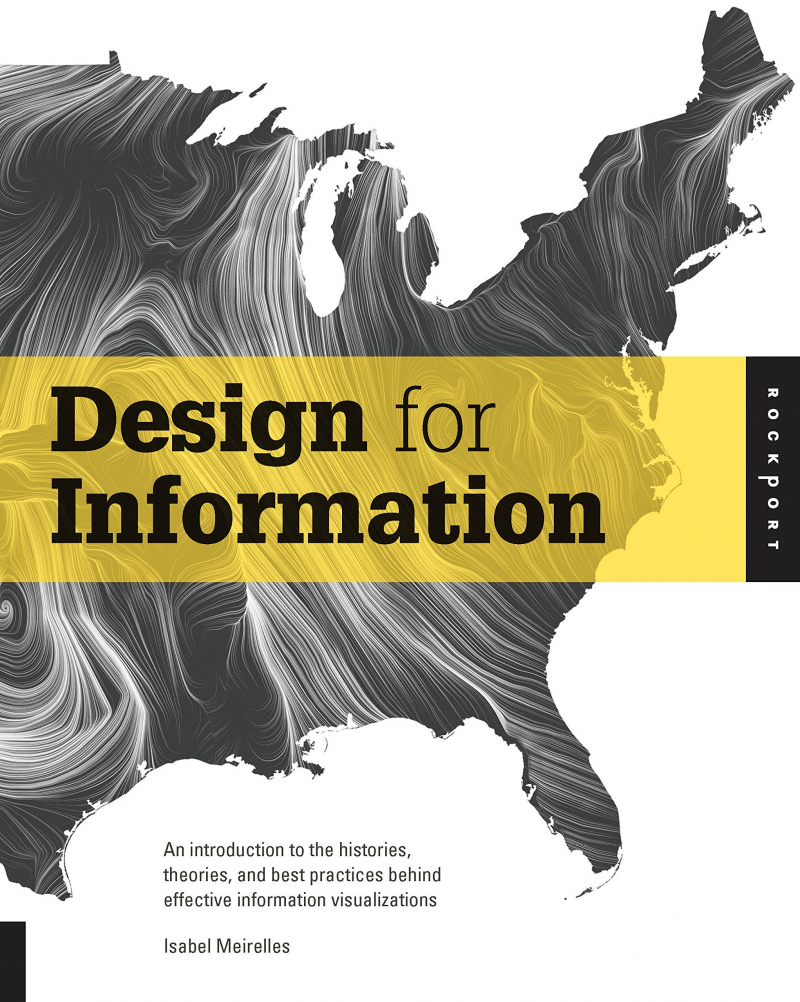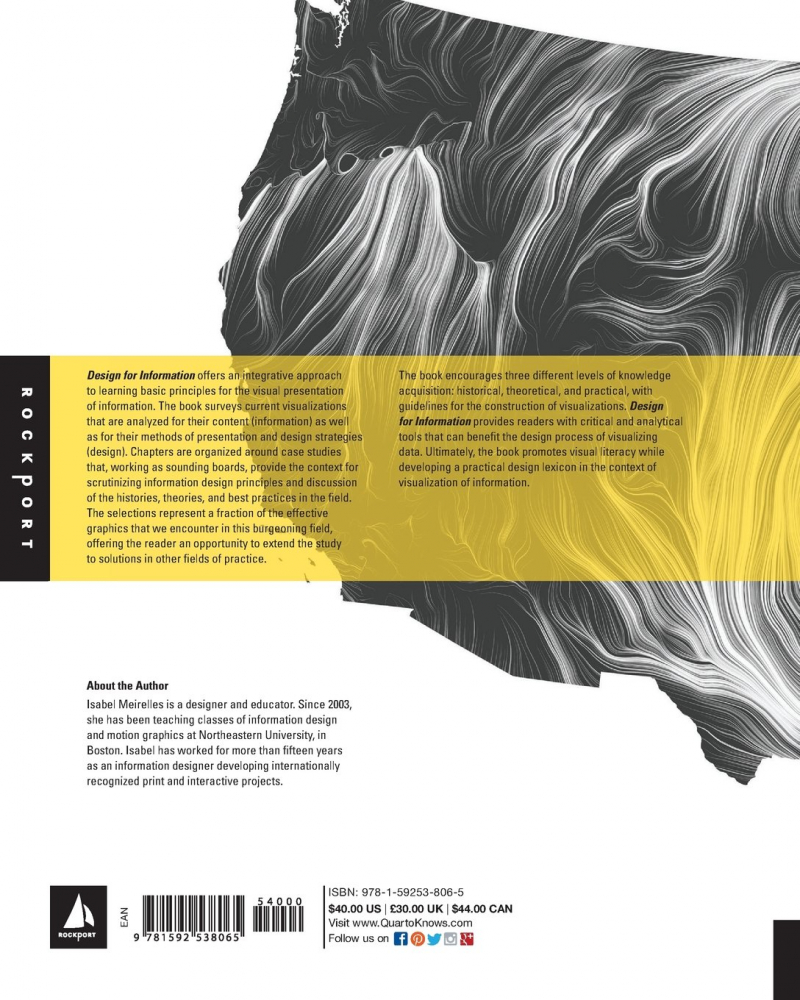Design for Information

To comprehend a subject, one must return to the classics at some time. Design for Information by Isabel Meirelles is a meticulously selected journey through the realm of visualization, mostly from the perspective of a designer, but with a broad scope. It's more than simply a gorgeous coffee table book; it delves deep into the concepts.
This book describes how humans interpret information visually, as well as the many ways to display data – charts, maps, network diagrams, a variety of flowcharts, trees, and other visual representations of data that aren't always tables of data. It's aimed towards [data-viz] professionals, rather than, for example, a product manager or someone who just works with Excel charts. This is more complex, such as when creating timelines of your company's history.
The definitions of structure - relational, hierarchical, geographical, temporal, or textual structures — haven't changed in over a decade. Whether you use R or Tableau or create by hand, the concepts of successfully communicating in a certain form are universal and tool-independent.
"Northeastern University's Meirelles has made a significant contribution to the field of information design. Edward Tufte's books Visual Display of Quantitative Information (CH, Nov'83), Envisioning Information (CH, Nov'90, 28-1398), and Visual Explanations (CH, Jul'97, 34-6236) were published in the 1980s and 1990s. A book on information design hasn't promised such a leap forward since Tufte's work. The key is the meticulous categorization of data into six different "structures." "Hierarchical Structures: Trees," "Relational Structures: Networks," "Temporal Structures: Timelines and Flows," "Spatial Structures: Maps," "Spatio-Temporal Structures," and "Textual Structures" are the six-chapter names that represent this. This book, which is both well-illustrated and well-written, will most likely become the standard for teaching information design. This is an important reference in the topic, including an appendix, full bibliography, and comprehensive index. It also contributes to graphic design theory in general since its structural categorization may be used for all types of visual communication. To summarize: "Important."― Choice.
Author: Isabel Meirelles
Language: English
Link buy: https://www.amazon.com/Design-Information-Introduction-Histories-Visualizations/dp/1592538061
















